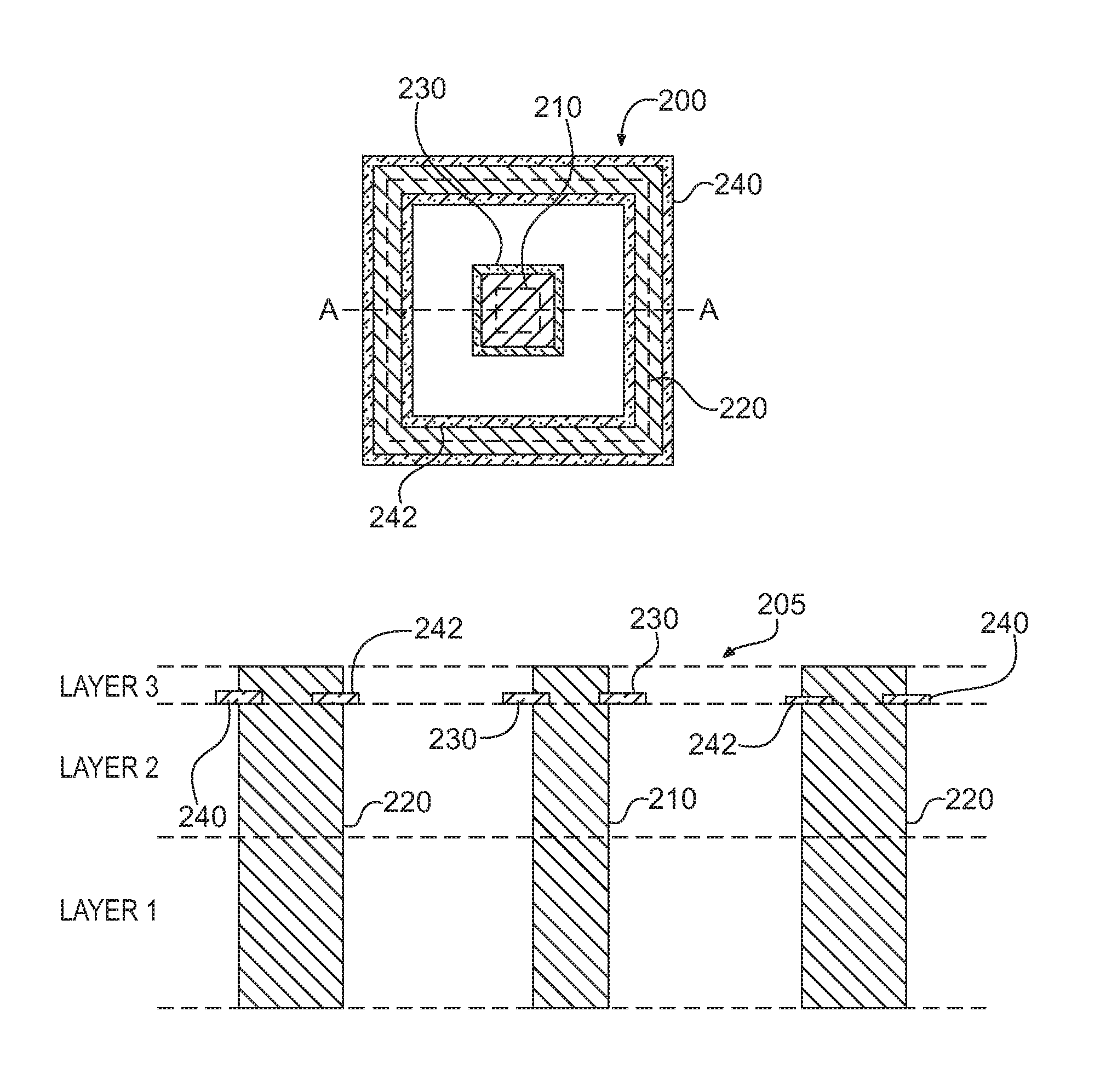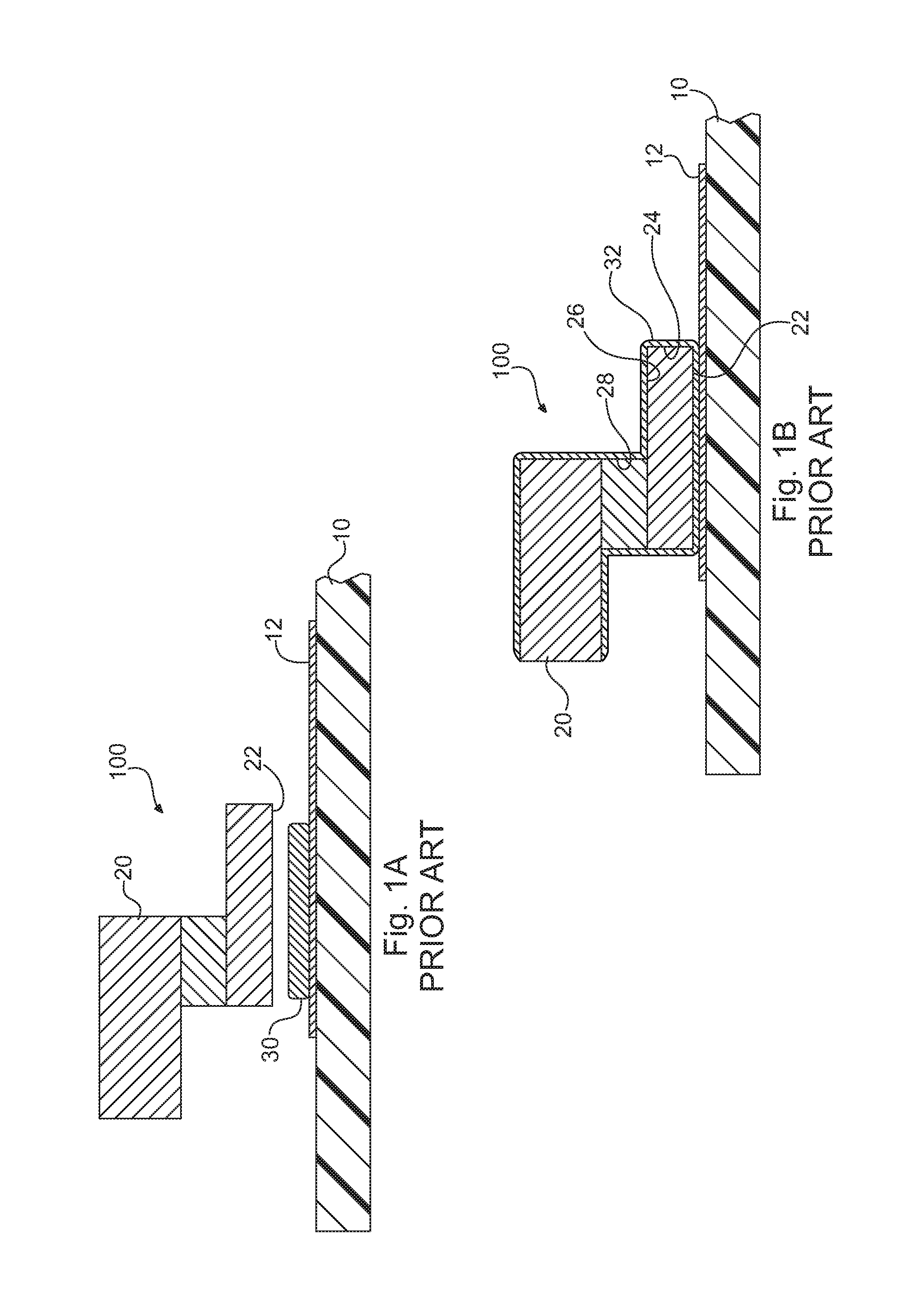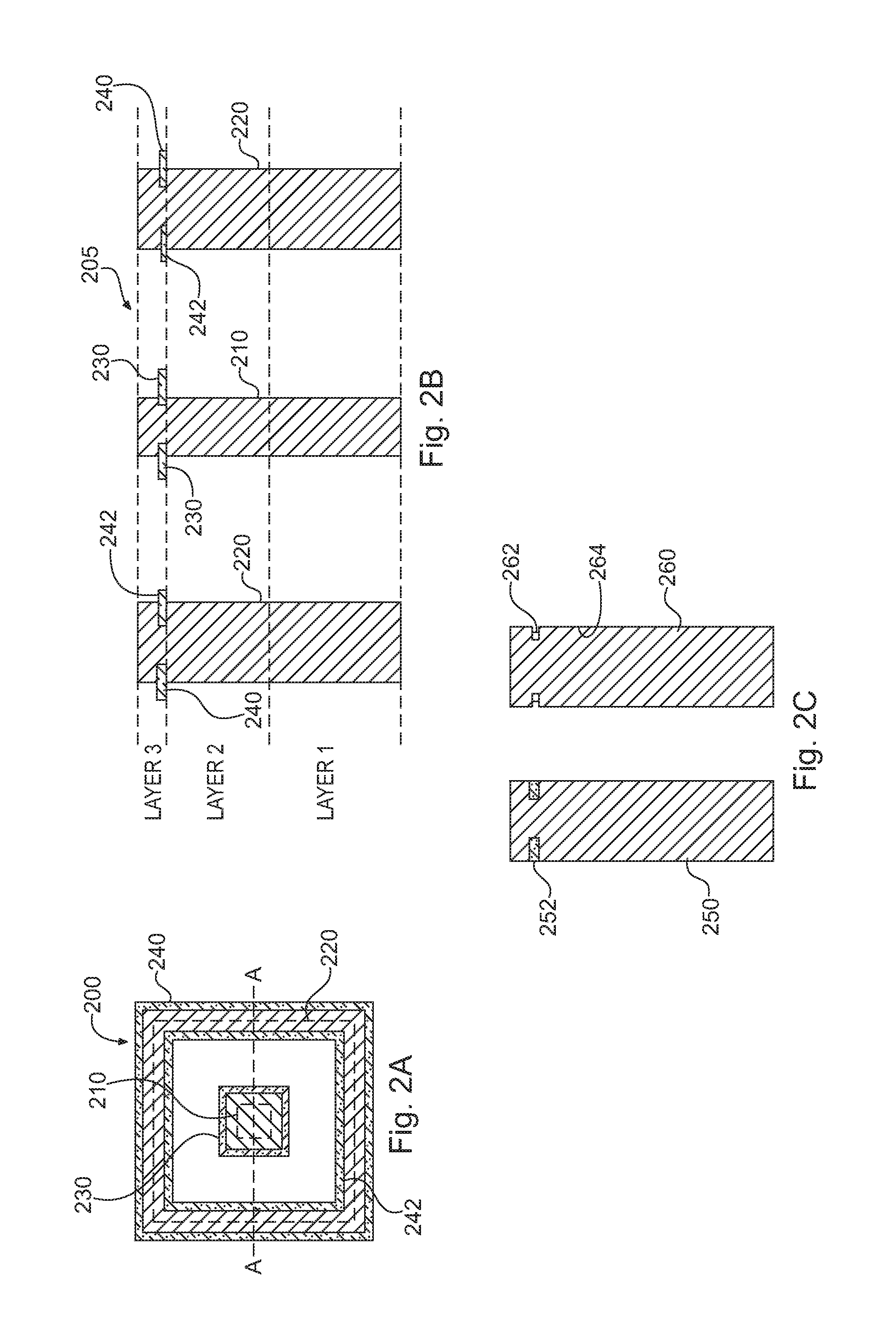Devices and methods for solder flow control in three-dimensional microstructures
a three-dimensional microstructure and flow control technology, applied in the direction of sustainable manufacturing/processing, semiconductor/solid-state device details, cable terminations, etc., can solve the problems of void spaces, void spaces, and different surface height changes,
- Summary
- Abstract
- Description
- Claims
- Application Information
AI Technical Summary
Benefits of technology
Problems solved by technology
Method used
Image
Examples
Embodiment Construction
[0024]Referring now to the figures, wherein like elements are numbered alike throughout, an aspect of the present invention may be understood by reference to FIGS. 1A-1B in which one of the problems addressed by the present invention is illustrated. FIG. 1A schematically illustrates a device 100 prior to assembly comprising a portion of a three-dimensional microstructure 20 for electrical and / or mechanical connection to a base layer 10, such as a circuit board. The base layer 10 may include a metal component, such as a circuit board trace 12, to which the three-dimensional microstructure 20 is to be attached, and attachment may be effected through the use of a solder 30 disposed between a mounting surface 22 of the three-dimensional microstructure 20 and the circuit board trace 12. The microstructure may for example be comprised of copper with a thin surface coating of nickel and gold as is common for an electrical conductor in microelectronics. Upon heating, the solder 30 is melted...
PUM
| Property | Measurement | Unit |
|---|---|---|
| temperature | aaaaa | aaaaa |
| height | aaaaa | aaaaa |
| electronic microstructure | aaaaa | aaaaa |
Abstract
Description
Claims
Application Information
 Login to View More
Login to View More - R&D
- Intellectual Property
- Life Sciences
- Materials
- Tech Scout
- Unparalleled Data Quality
- Higher Quality Content
- 60% Fewer Hallucinations
Browse by: Latest US Patents, China's latest patents, Technical Efficacy Thesaurus, Application Domain, Technology Topic, Popular Technical Reports.
© 2025 PatSnap. All rights reserved.Legal|Privacy policy|Modern Slavery Act Transparency Statement|Sitemap|About US| Contact US: help@patsnap.com



